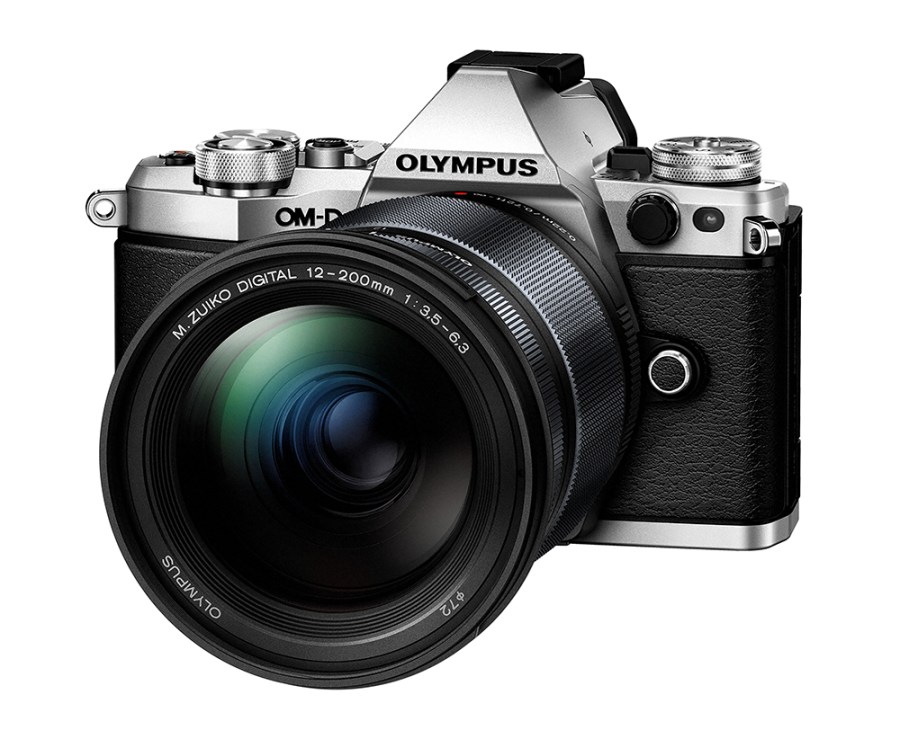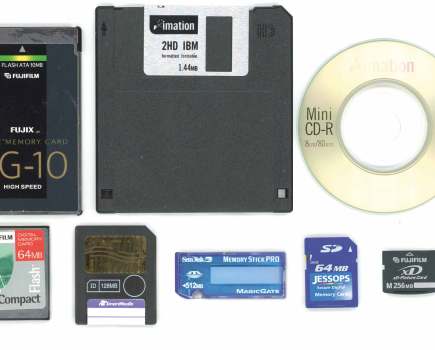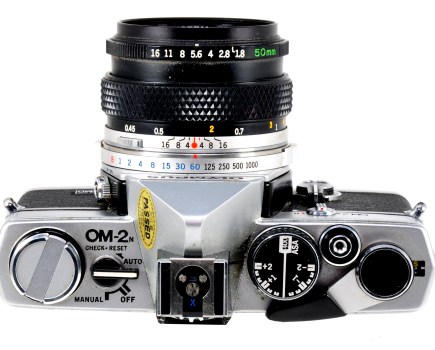The best second-hand camera systems under £1,000/$1,000 give you a complete setup for any genre. Angela Nicholson picks the best.
We all know that photography isn’t the cheapest of hobbies. However, crafting a comprehensive camera-and-lens setup for any genre does not have to cost the earth. By shopping second-hand, you can get some seriously high-spec cameras and lenses for a fraction of what they would have cost when they were new. We’ve put together this guide to help you craft a lean, mean and highly capable setup for all genres of shooting, getting everything you need for less than £1,000/$1,000.
Second-hand shopping can feel daunting at first, but once you get into the swing of it, hunting down bargains on photo gear can get seriously addictive. Before we get into the kit, we’re going to take a quick look at some of the key points to remember when buying second-hand camera systems.
How to choose the best second-hand camera systems
First of all, when you’re shopping second-hand, it’s a good idea to stick with a reputable dealer. This generally means a specialist photographic retailer, with a team of experts who will test used gear before listing it. We’ve appended a full list of recommended retailers in the UK and USA at the bottom of this guide. Remember that different sites will likely have different stock and be offering it at varying prices, so it pays to compare a few different retailers before buying anything.
You might think you can save some cash by hunting on eBay – and you can. The prices are often better. However, one thing that you do get with a dealer and don’t with an eBay seller is a used-gear warranty. It’s routine for specialist retailers to offer 3-6 months cover on used kit if something turns out to be defective, giving you a little more peace of mind. There are definitely bargains to be had on eBay, but it’s worth being cautious.
When it comes to the camera/lens combo itself, think about the features you need and the ones you don’t. We’ve divided this guide up into genres to try and help you think about what you’re buying in this way. For instance, the Sony A7R we’ve picked as our best second-hand buy for landscape has a pretty sluggish autofocus system. In a lot of genres that would be a deal-breaker – but landscape shooters can live without fast autofocus. Very few people need their camera to be good at absolutely everything, so you can save yourself a bundle by picking up a camera that’s weaker in areas you’re not bothered about, like video or burst rate.
Best second-hand camera system for landscape photography
Sony A7R (£584 / $654) and Tamron 20mm f/2.8 Di III OSD M 1:2 (£229 / $199)
I still remember my amazement at the size of the Sony A7R when it was first unveiled in October 2013. Alongside the A7, it was the first full-frame mirrorless camera, and with dimensions of just 127x94x48mm, it seemed tiny compared to a full-frame DSLR camera.
A few years down the line, Sony is now on its fourth generation of the A7R series and there have been great developments made along the way, but the original Sony A7R remains a great option for landscape photography. I’ve already mentioned its size, but it also weighs just 465g with a battery, which means it’s highly portable and you won’t mind carrying it when you’re covering long distances on foot.

The Sony A7R, one of the first full-frame mirrorless cameras ever released.
Then there’s the 36.4MP full-frame sensor, which is capable of capturing plenty of detail so it can out-resolve more modern cameras with lower pixel counts.
One of the key criticisms of the A7R is that its contrast detection autofocus system struggles in low light or if the subject has low contrast, so it’s not a great choice of camera for sport photography, but a slow AF system isn’t a problem for landscape images. CIPA testing also indicates that the A7R’s battery lasts for around 340 shots before needing recharging, which is rather low but Sony-FW50 batteries are still available new for £54.99, so you can afford to buy a spare or two and stay in budget.
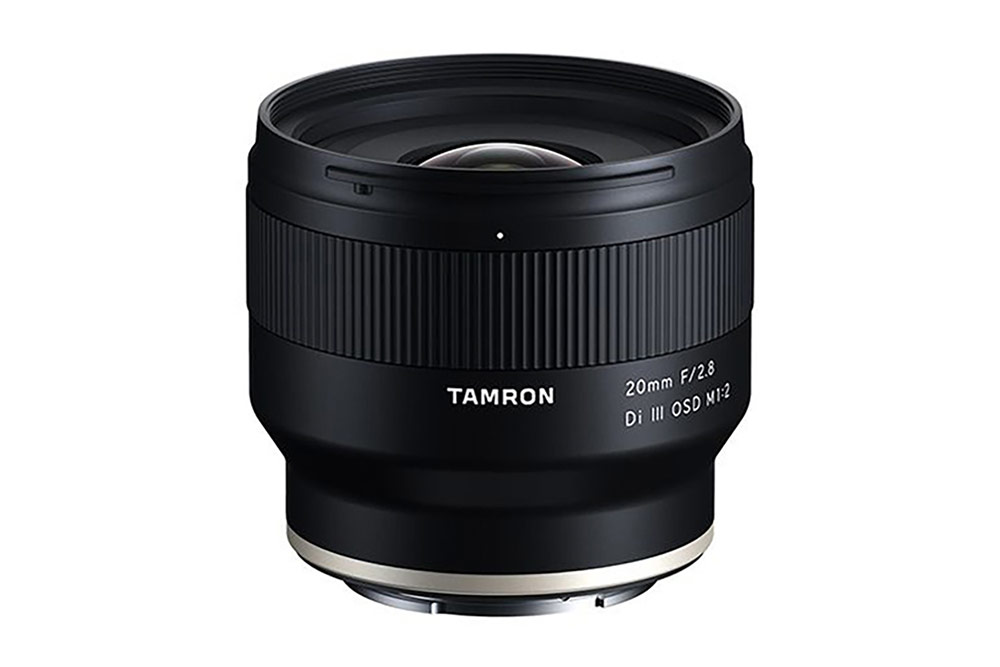
Tamron’s 20mm f/2.8 Di III OSD M 1:2 is our choice of lens for this budget.
Landscape photography generally calls for a wideangle lens – and at around £250 in excellent condition, the Tamron 20mm f/2.8 Di III OSD M 1:2 makes a great choice. It’s compact, optically excellent and weather-sealed, yet weighs just 220g. An added bonus is that it can focus on subjects just 11cm from the sensor, delivering half-life-size reproduction.
If the Tamron 20mm f/2.8 Di III OSD M 1:2 doesn’t appeal, take a look at the Tamron 24mm f/2.8 Di III OSD M1:2 (£199), Samyang AF 18mm F2.8 FE (£289) or the Samyang AF 24mm F2.8 FE (£194).
Best second-hand camera system for astrophotography
Canon EOS 6D (£439 / $424) and Samyang 14mm f/2.4 XP (£509 / $454)
Since its launch in November 2012, the Canon EOS 6D has been one of the most popular cameras around for astrophotography. That’s because its full-frame sensor and comparatively modest pixel count of 20.2million enables it to capture remarkably clean low-to-medium ISO-range images with excellent shadow detail that can withstand some brightening.

The Canon EOS 6D is one of the cheapest full-frame cameras you can buy.
As it’s a DSLR, the 6D has an optical viewfinder, but it can also operate in live view mode if you prefer to compose the image on screen – that can be helpful in dark conditions. One thing to bear in mind, however, is that there’s no bulb-timer or intervalometer built in so you’ll have to invest in an external one such as the Hahnel Capture Timer Kit (£69 new).
The EOS 6D has Canon’s EF mount which means that there’s a huge range of lenses available for use on it. Astrophotography usually calls for a fast wideangle lens and one that caught my eye is the Samyang 14mm f/2.4 XP which can be found for around £509 second-hand in like new condition. It’s a manual-focus optic, but there’s a distance scale, which makes focusing at infinity easy.

Samyang 14mm f/2.4 XP
Because of the distance of the subject and the short focal length of the lens, there’s plenty of depth of field, so you can shoot with the aperture wider open. The large maximum aperture also lets in plenty of light so you don’t need to worry about needing to push the sensitivity up to very high levels and recording a lot of noise instead of stars.
Best second-hand camera system for portrait photography
Canon EOS 5D Mark III (£729 / $604) and Canon EF 85mm f/1.8 USM (£269 / $269)
Canon’s EOS 5D series of full-frame DSLRs have been incredibly popular and the 5D Mark III is one the most widely-owned. Fortunately, it’s now readily available on the second-hand market at very attractive prices. You can expect to pay around £720 for one in good condition yet it cost £2,999 at launch.
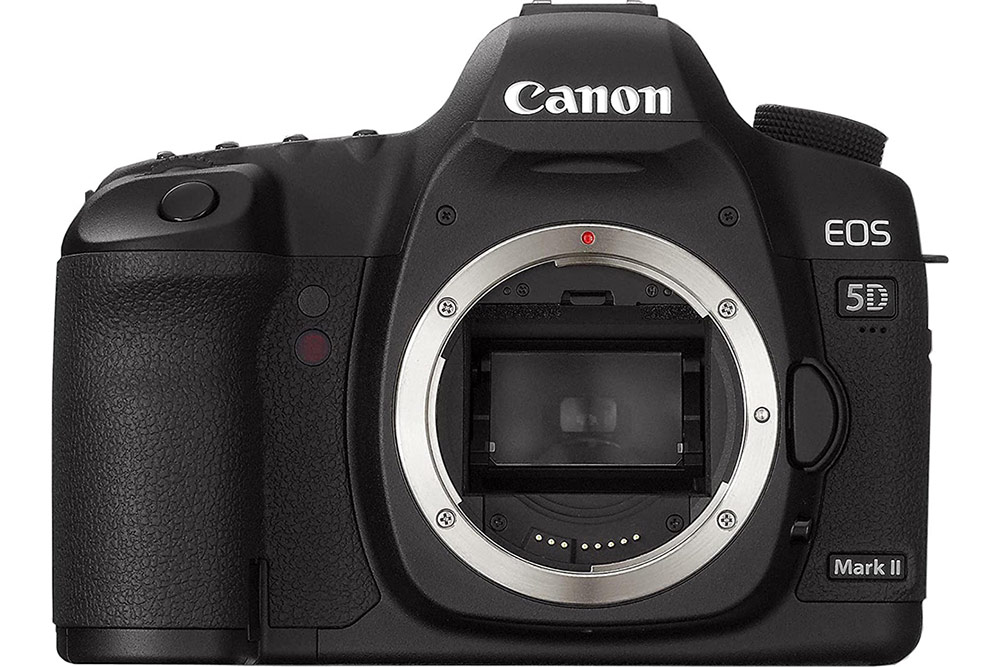
The Canon EOS 5D Mark III
The 5D Mark III features a 22.3MP sensor and Digic 5+ processor, which together enable a native sensitivity range of ISO 100-25,600. In addition, there’s a 61-point autofocus system with 41 cross-type points (5 of which are diagonally sensitive) and maximum continuous shooting rate of 6 frames per second. That’s a nice combination for portrait photography because it means you can target your subject’s eyes precisely and capture some movement if you wish to, rather having to opt for static poses.
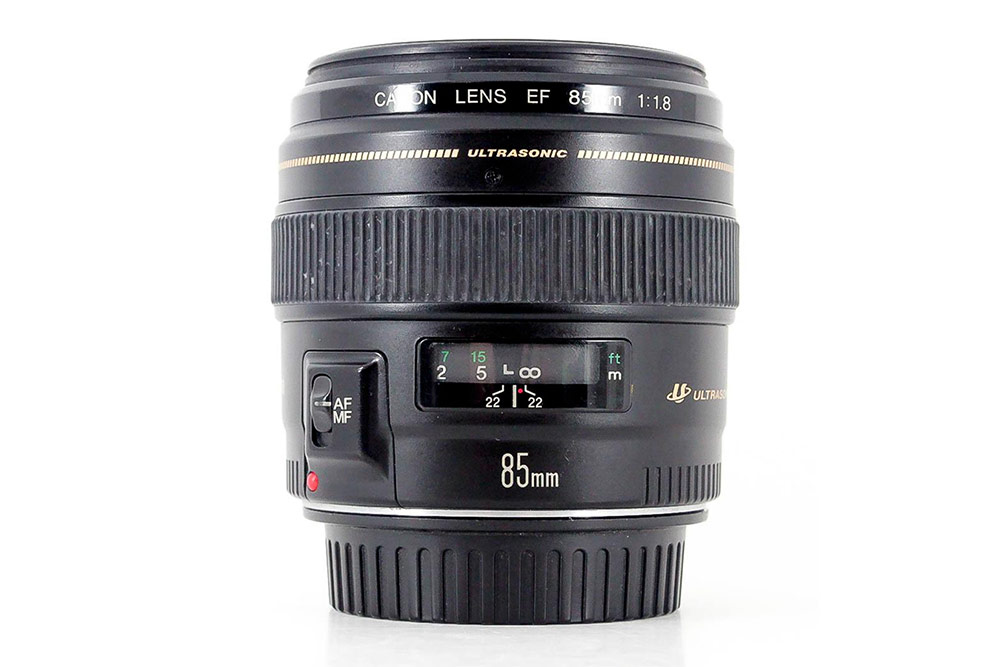
The Canon EF 85mm f/1.8 USM is an ideal, inexpensive portrait lens.
A full-frame sensor gives plenty of scope to blur the background of a portrait by using a larger aperture. Thanks to its flattering perspective and comfortable shooting distance, an 85mm lens is the classic focal length for portraiture. At around £260 in excellent condition, the Canon EF 85mm f/1.8 USM makes a great pairing with the 5D Mark III. It’s a widely-respected optic that delivers excellent centre sharpness at wide apertures.
Best second-hand camera system for sport and wildlife photography
Nikon D7200 (£499 / $544) and Nikon Nikkor AF-S 70-300mm f/4.5-5.6 G IF ED VR (£284 / $469)
A sub-full-frame camera makes an attractive choice for sport and wildlife photography because, as well as being smaller and more affordable than a full-framer, the focal length magnification factor makes any lens mounted on it seem longer. Dating from March 2015, the Nikon D7200 has a 24.2MP APS-C format sensor with no anti-aliasing filter, enabling it to capture sharper images and fine detail.

The Nikon D7200 is a mid-range DSLR that will keep up with action and wildlife.
This chip is paired with Nikon’s Expeed 4 processor and together they enable a maximum continuous shooting rate of 6fps for up to 100 JPEGs or 27 12-bit raw files. Yes, there are much faster shooting rates available these days but that also means that your memory card fills up quicker and you have more images to sift through, so for most sport and wildlife photography, 6fps is just fine. However, if you want to push a little bit higher, there’s the option of the 1.3x crop mode that enables you to shoot at 7fps.
Freezing action requires a fast shutter speed which may mean you need to push up the ISO setting in low light, so it’s good to know that the D7200 has a native sensitivity range of ISO 100-25,600. Further good news for sport and wildlife photographers is that the D7200 has an excellent 51-point AF system with 15 cross-type points. In addition, the central cross-type point is sensitive down to f/8.

Pair the Nikkor AF-S 70-300mm f/4.5-5.6 G IF ED VR for a lean, inexpensive action setup.
As it has the Nikon F-mount, the D7200 is compatible with a huge range of lenses that are readily available on the second-hand market. At around £250 in excellent condition, the Nikkor AF-S 70-300mm f/4.5-5.6 G IF ED VR is a very attractive pairing that delivers an effective focal length range of 105-450mm, which is a great range for sport and wildlife.
Second-hand camera system for travel photography
Olympus OM-D E-M5 Mark II (£334 / $389) and Olympus M.Zuiko Digital ED 12-200mm f/3.5-6.3 (£534 / $634). Optional: Panasonic Lumix G 20mm f/1.7 ASPH II (£179 / $204)
The Olympus OM-D E-M5 Mark II is great for travel, as it’s a small, light camera, yet robust and weather-sealed. It also has a collection of useful modes for tricky situations. Live Time, Live Bulb and Live Composite mode, for example, take the guesswork out of long exposures by allowing you to see the image build up in the viewfinder or on the screen on the back of the camera.
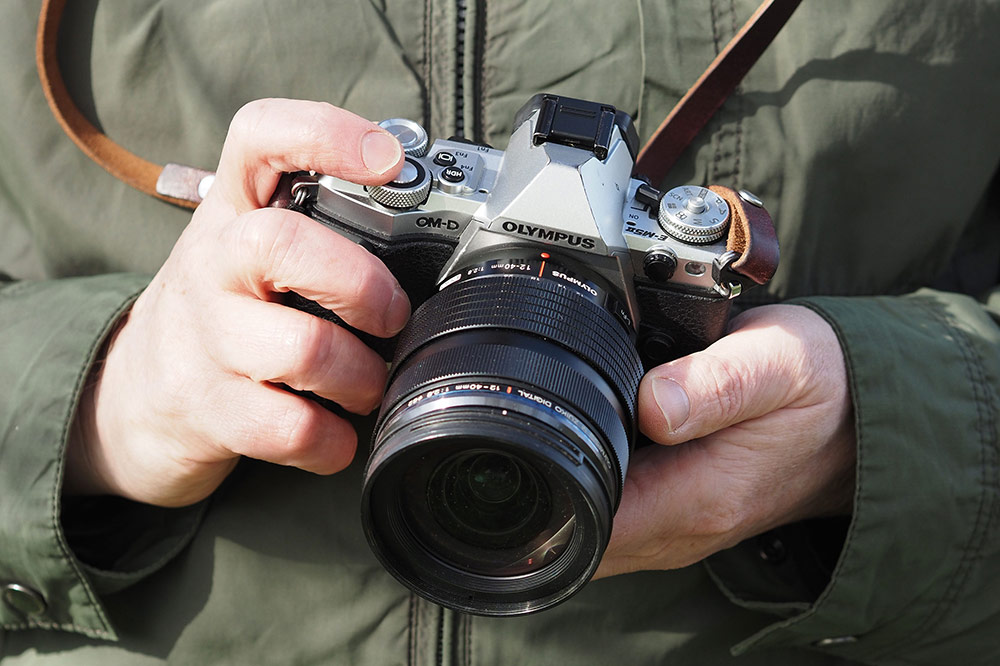
The Olympus OM-D E-M5 Mark II in hand. Photo credit: Andy Westlake
There’s also High Res Shot mode that sets the 16MP sensor to shift by a tiny amount between a series of 8 shots captured in succession. These are then composited in-camera to create a 40MP equivalent image.
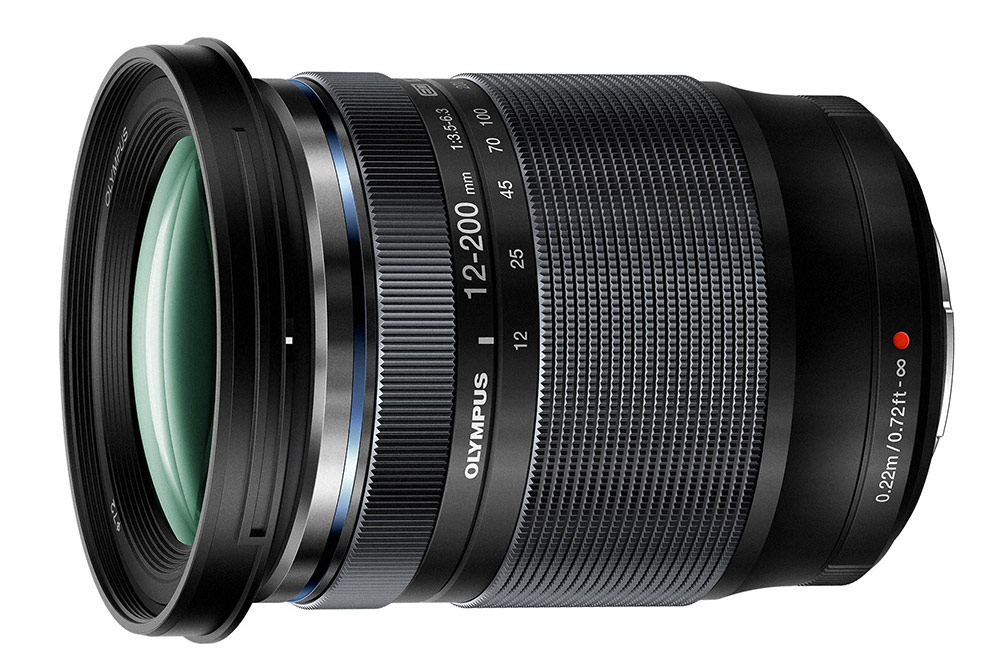
The Olympus M.Zuiko Digital ED 12-200mm f/3.5-6.3 is a lightweight, do-it-all travel lens.
As a Micro Four Thirds mirrorless camera, the E-M5 Mark II is compatible with a huge range of lenses from Olympus (OM System), Panasonic, Sigma and more, but our recommendation for travel photography is the Olympus M.Zuiko Digital ED 12-200mm f/3.5-6.3. This lens offers an effective focal length range of 24-400mm, making it phenomenally versatile for everything from interiors to landscapes and portraits to wildlife or distant details.
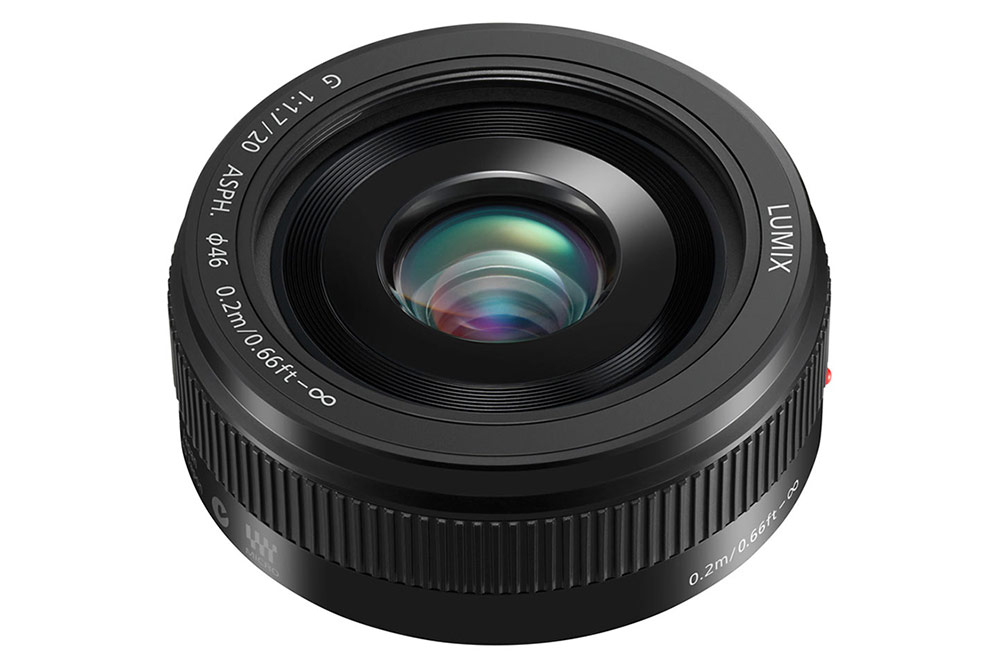
Add the Panasonic Lumix G 20mm f/1.7 ASPH II into the mix, and you’ve got extra latitude in low light.
While the E-M5 Mark II has an excellent image stabilisation system built in, the Panasonic Lumix G 20mm f/1.7 ASPH II is also a great addition. Its f/1.7 maximum aperture makes it ideal for low-light shooting. The addition of this lens at current second-hand prices nudges us just over our £1,000 budget in the UK, and well over our $1,000 budget in the US, so consider it an optional extra.
Best second-hand camera system for street photography
Fujifilm X100F (£944 / $1,069)
Unlike the other cameras in this list, the Fujifilm X100F is a compact camera. However, it’s not your average compact because it has an APS-C format sensor inside. In fact, it’s the same 24.3MP X-Trans CMOS III sensor as is found in the Fujifilm X-T2 and X-Pro2. And around the front, there’s the superb Fujinon 23mm f/2.0 lens, which with an effective focal length of 35mm, is ideal for street photography.
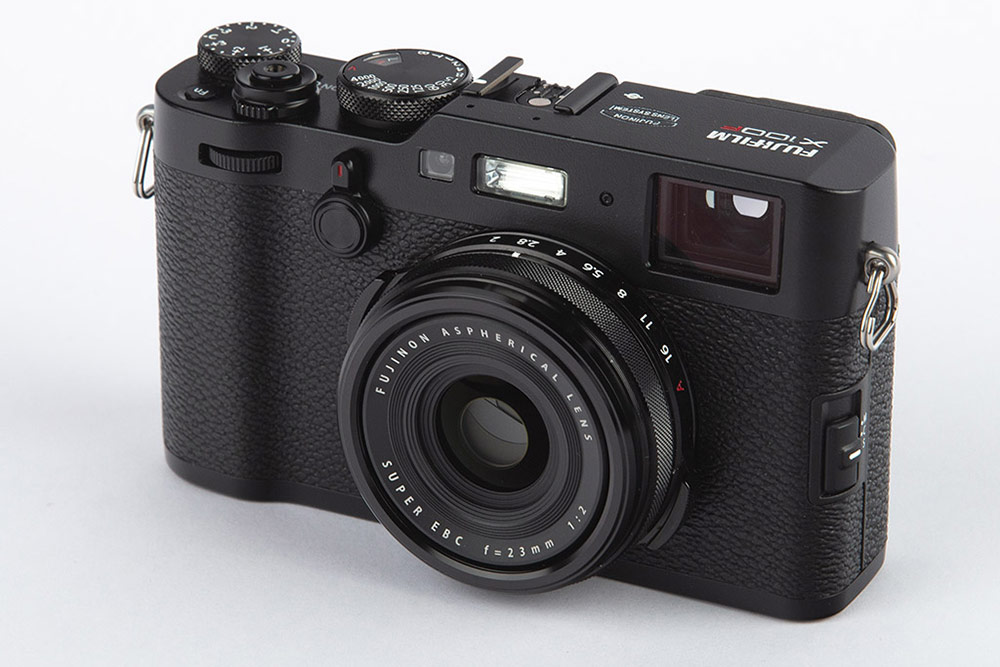
The Fujifilm X100F in black.
Plus, the large maximum aperture means that you can get nice separation of your subject from its surroundings and you don’t need to push the sensitivity (ISO) up too high if the light level drops a little.
In another nice touch, the X100F has a hybrid viewfinder which means that with a flick of a switch you can change from the optical viewfinder to a 0.48in 2,360k-dot electronic viewfinder. This is joined by a 3in 1,040k-dot LCD monitor.
A total of 15 of Fujifilm’s excellent Film simulation modes are on board, including Acros (with or without a red, green or yellow filter effect), which produces very attractive black & white results in-camera – which is perfect for traditional-looking street photography.
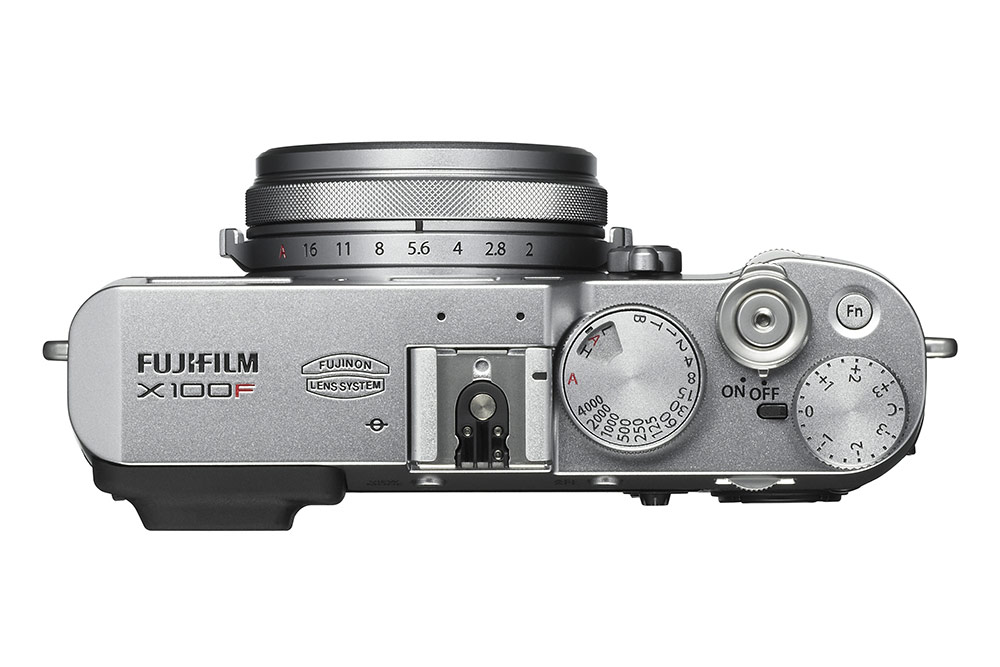
The Fujifilm X100F is also available in silver trim.
Thanks to its aperture ring and dials to set the shutter speed, ISO and exposure compensation, you can set up the X100F for shooting without even powering it up, and when you do switch it on, you’ll find that its focusing system is nice and responsive. The Tracking AF and 8fps continuous shooting capability could prove useful when you want to follow someone’s movement and capture the perfect composition.
This is pushing at the upper end of our £1,000/$1,000 budget, so you may also want to consider the Fujifilm X100T, which was this camera’s predecessor. The X100F was quite a substantial upgrade, with new-generation 24.3MP X-Trans CMOS III sensor outstripping the X100T’s 16.3MP X-Trans CMOS II sensor. There are other improvements across the board; however, the two cameras have the same lens setup, and offer a fundamentally very similar photographic experience.
Retailers to have a look at to find these second-hand camera systems:
- www.carmarthencameras.com
- www.cameraworld.co.uk
- www.cliftoncameras.co.uk
- www.ffordes.com
- www.lcegroup.co.uk
- www.mpb.com
- www.mifsuds.com
- www.parkcameras.com
- www.worldwidecameraexchange.co.uk
- www.wexphotovideo.com
- www.adorama.com (USA)
- www.bhphotovideo.com (USA)
- www.keh.com (USA)
You’ll find even more bargains in our buying guides, or inspiration for second-hand camera systems in our second-hand section.
Text by Angela Nicholson, with contributions from Jon Stapley.
Further reading
12 best second-hand classic compact cameras
The best second-hand full-frame camera bargains
How to check a second-hand lens for faults
Second-hand lenses buyers’ guide
Best used cameras and lens combos under £500/$600

